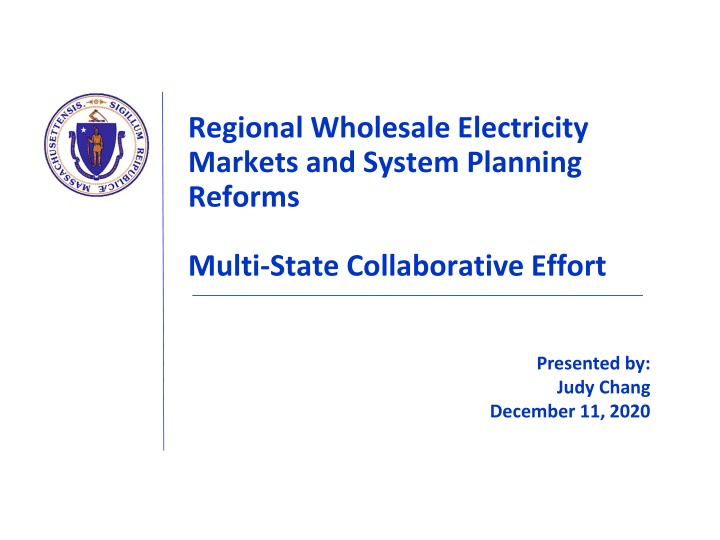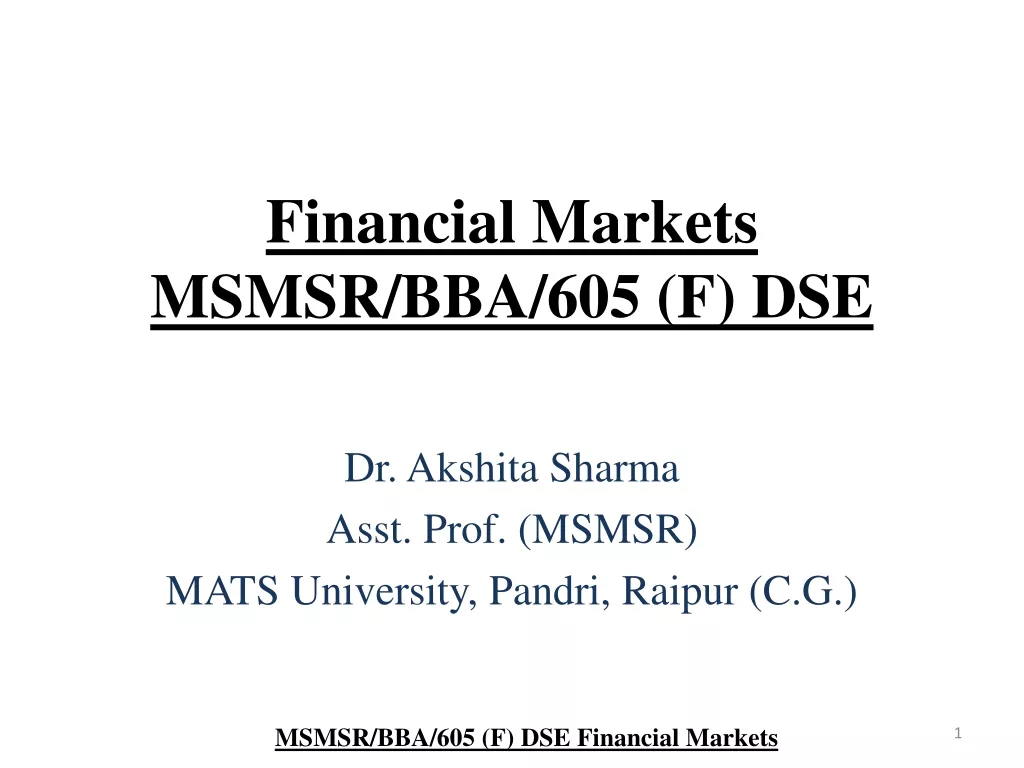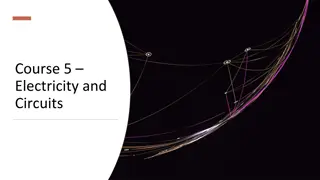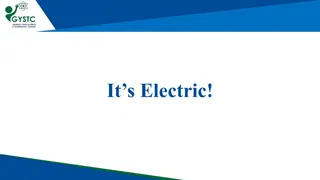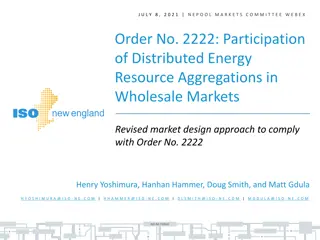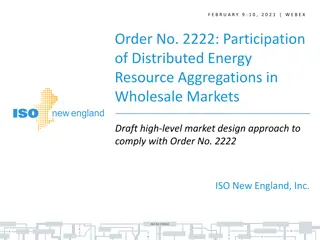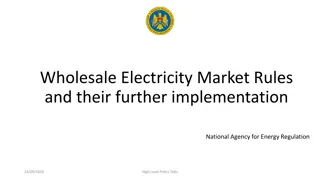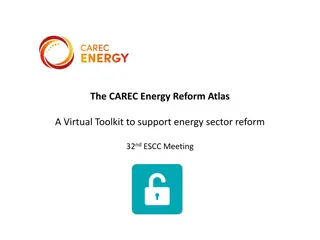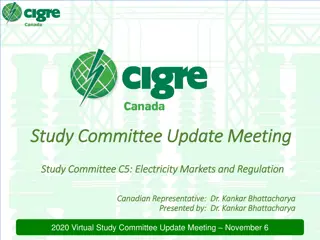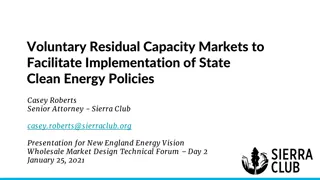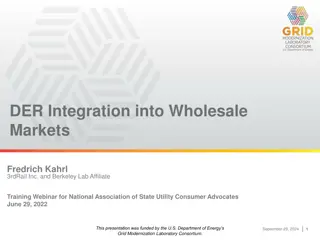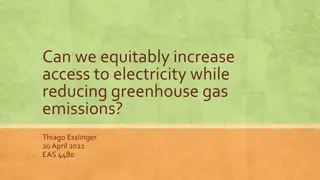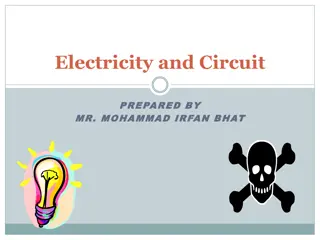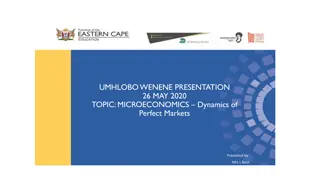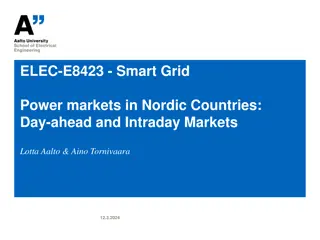Regional Wholesale Electricity Markets Reform Proposal
The proposal highlights the need for changes in the regional wholesale electricity market structure to align with clean energy goals in New England. It emphasizes the importance of market-based mechanisms, system planning, and accountability in achieving cost-effective decarbonization while ensuring reliability.
Download Presentation

Please find below an Image/Link to download the presentation.
The content on the website is provided AS IS for your information and personal use only. It may not be sold, licensed, or shared on other websites without obtaining consent from the author.If you encounter any issues during the download, it is possible that the publisher has removed the file from their server.
You are allowed to download the files provided on this website for personal or commercial use, subject to the condition that they are used lawfully. All files are the property of their respective owners.
The content on the website is provided AS IS for your information and personal use only. It may not be sold, licensed, or shared on other websites without obtaining consent from the author.
E N D
Presentation Transcript
Regional Wholesale Electricity Markets and System Planning Reforms Multi-State Collaborative Effort Presented by: Judy Chang December 11, 2020
Content Overall Proposal for Change Wholesale Electricity Market Structure and Design Transmission Planning for the Future ISO-New England s Governance and Mission 2
Executive Summary: Proposal for Change To meet New England states climate goals at least cost, we need a regional electricity system operator and planner committed to adapting to New England s evolving power system needs. Our Roadmap analysis shows that under all scenarios examined, New England needs: 1,000-2,000 MW of offshore wind/year; 500 1,000 MW of solar PV/year New transmission upgrades We expect our partner to fully account for state energy and environmental laws, including decarbonization targets, while ensuring system reliability at the lowest cost: 1. Proactively develop market-based mechanisms, in concert with state policymakers, that facilitate growth in clean energy resources 2. Conduct best-in-class system planning activities that proactively address our clean energy needs, and 3. Adapt the organizational mission and structure to reflect our energy transition, and maintain a high degree of accountability and transparency to participating states and other stakeholders 3
Recent New England Market Resource Adequacy Issues Low energy and capacity market prices have implications on system reliability (resource adequacy) for New England, recent examples include: Millstone, the 2,088 MW nuclear plant in Connecticut needed a contract to stay financially viable Mystic, the 1,700 MW gas plant in Boston needed a contract to continue operation (along with the Everett LNG terminal) However, a new 650 MW gas combined cycle power plant cleared the capacity market and is expected to be built in Connecticut in 2022 These results show that market design is misaligned with decarbonization laws Increases region s reliance on gas -fired power plants 5
Reform #1: Wholesale Electricity Market Structure and Design Objective: Pursue a new, regionally-based market framework that delivers reliable electricity services, accounting for and support States clean energy laws in an efficient and affordable manner Currently, New England s wholesale markets does not fully value clean energy investments made by the ratepayers; thus, ratepayers overpay to meet our decarbonization mandates Recommendation: A reformed regional wholesale market must: 1. Meet the states decarbonization mandates and maintain resource adequacy at the lowest cost by using market-based mechanisms 2. Establish effective mechanisms that accommodate existing and future long-term contracts for clean energy resources executed pursuant to state law 3. Integrate distribution-level resources effectively and efficiently 4. Allow interested buyers and sellers to participate 5. Provide for an appropriate level of state involvement in market design and implementation 6
Background on Transmission System Planning Transmission planning is one of ISO-NE s core responsibilities Regional planning can and should incorporate anticipated future needs to integrated renewable and clean resources Lacking a vision, the region has spent billions of dollars in new transmission without an eye toward how to integrate the clean resources that the region needs ISO-NE needs to make this its priority going forward Source: Graphic from ISO-New England, 2019 Economic Study: Offshore Wind Integration, June 30, 2020 7
Reform #2: Transmission Planning for the Future Objective: Incorporate state decarbonization pathways into regional long-term transmission planning As a region, to decarbonize the electricity system, we need a clear understanding of the investments needed to support our transmission infrastructure Recommendation: Develop and use a planning framework that includes: 1. Regional planning effort that provides a high-level transmission system plan 2. Use states scenarios as a starting point for developing future transmission needs 3. Provide needed transmission system planning information to the region, including high level cost estimates, 4. Conduct detailed analyses for specific scenarios, with the objective being to understand future conditions and needs, including: Onshore system upgrades needed Offshore systems that may be needed to support offshore wind resources Potential options that should be explored, including non-transmission alternatives Impact of DERs 5. Conduct stakeholder meetings to discuss the potential use of transmission to integrate all of the necessary energy resources in the region at the lowest cost possible 6. Informed by States direction, conduct detailed planning processes to maximize the use of existing transmission, build new transmission only where absolutely necessary, and use competitive processes to minimize costs to consumers. 8
System Operator Governance The current organizational structure does not provide States adequate influence in key decisions 9
Reform #3: New Governance to Support Energy Transition Objective: Adjust the ISO-NE s governance structure and mission to support States needs Recommendation: Explore changes after analyzing the following: As part of this process, NESCOE seeks to explore reform of ISO-NE governance to achieve greater transparency around decision-making, with a needed focus on Consumer cost concerns Support for States energy and environmental laws 10
Next Steps Starting in January 2021: Convene technical conferences to explore potential methods of reform Introduce the principles in the Vision Statement Solicit proposals from interested stakeholders Solicit comments and dialogues with stakeholders Last month through March 2021: Explore approaches to achieve the reforms needed Later in 2021: Report back to the Governors on proposed solutions 11
Questions? 12
